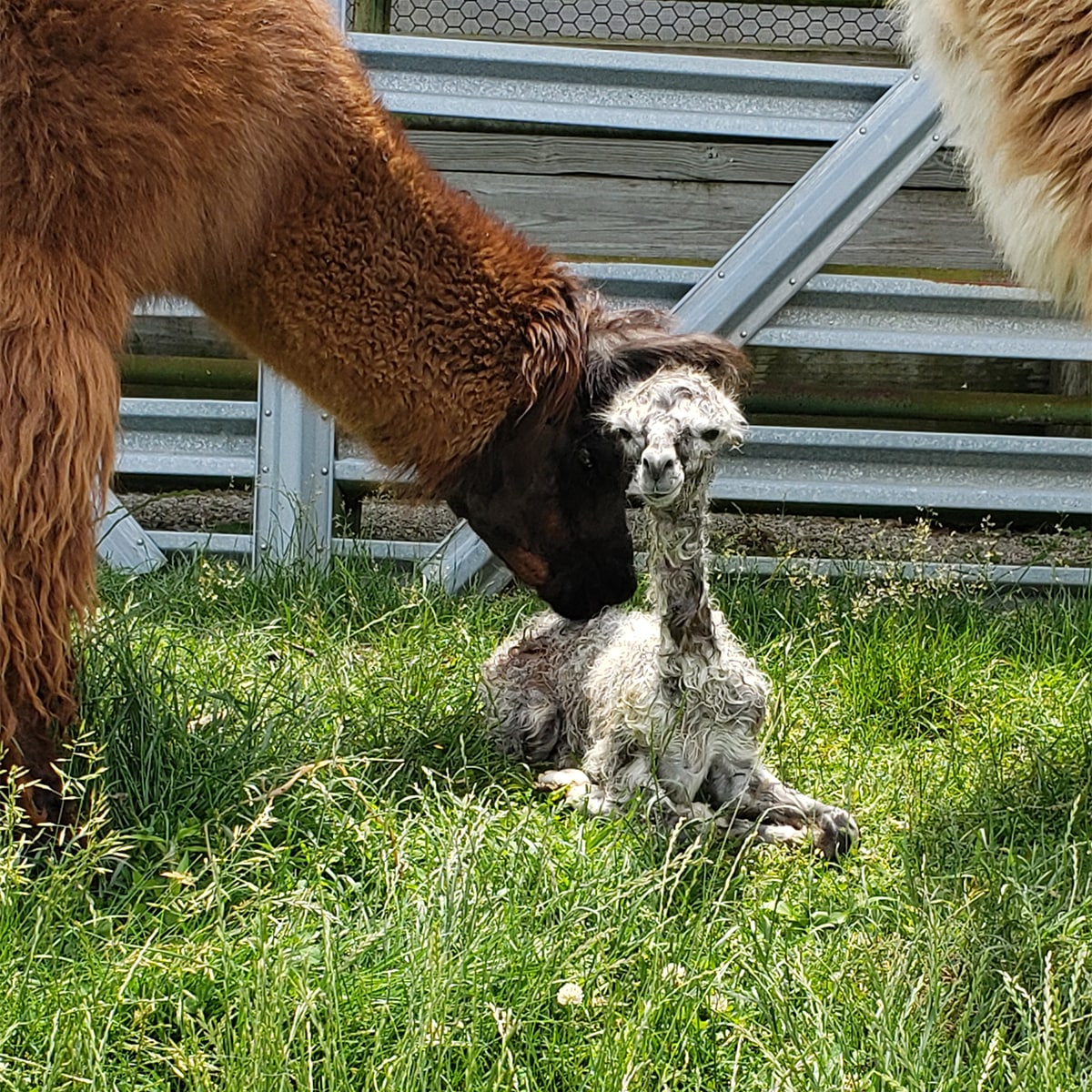Lamas (single “L”) include the Llama (double “Ll”), Alpaca, Guanaco, and Vicuna. Originating in the Central Plains of North America in pre-historic times, the lama’s predecessor migrated to South America. Their cousin, the camel, relocated to the Middle East and other regions of the world. The end of the Ice Age marked the extinction of the camelid in North America.
Llamas were domesticated in the Andean highlands of Peru thousands of years ago and are among the world’s oldest domestic animals. While primarily a beast of burden for the native herdsmen, llamas also provided them with meat, wool, hides for shelter, manure pellets for fuel, and became sacrificial offerings to their gods.
Similarly, alpacas provided fine fiber, meat, and manure pellets for fuel. There are two distinct breeds of alpaca, the “Huacaya” and “Suri.” The Huacaya’s fleece is very crimpy or wavy, while the Suri alpaca’s fleece hangs in pencil-like locks. The wild guanaco is a common herbivore of the arid lands, and the endangered wild vicuña is a fine-fleeced camelid of the high Andean mountains. Private animal collectors and zoos began bringing our present-day llamas to North America in the late 1800s and early 1900s. In recent years, llamas and alpacas have been imported from Bolivia, Peru, Chile and Argentina. Today there are an estimated 7 million llamas and alpacas in South America. Check with the information provided by the International Lama Registry concerning current numbers of lamas in Northern America.

